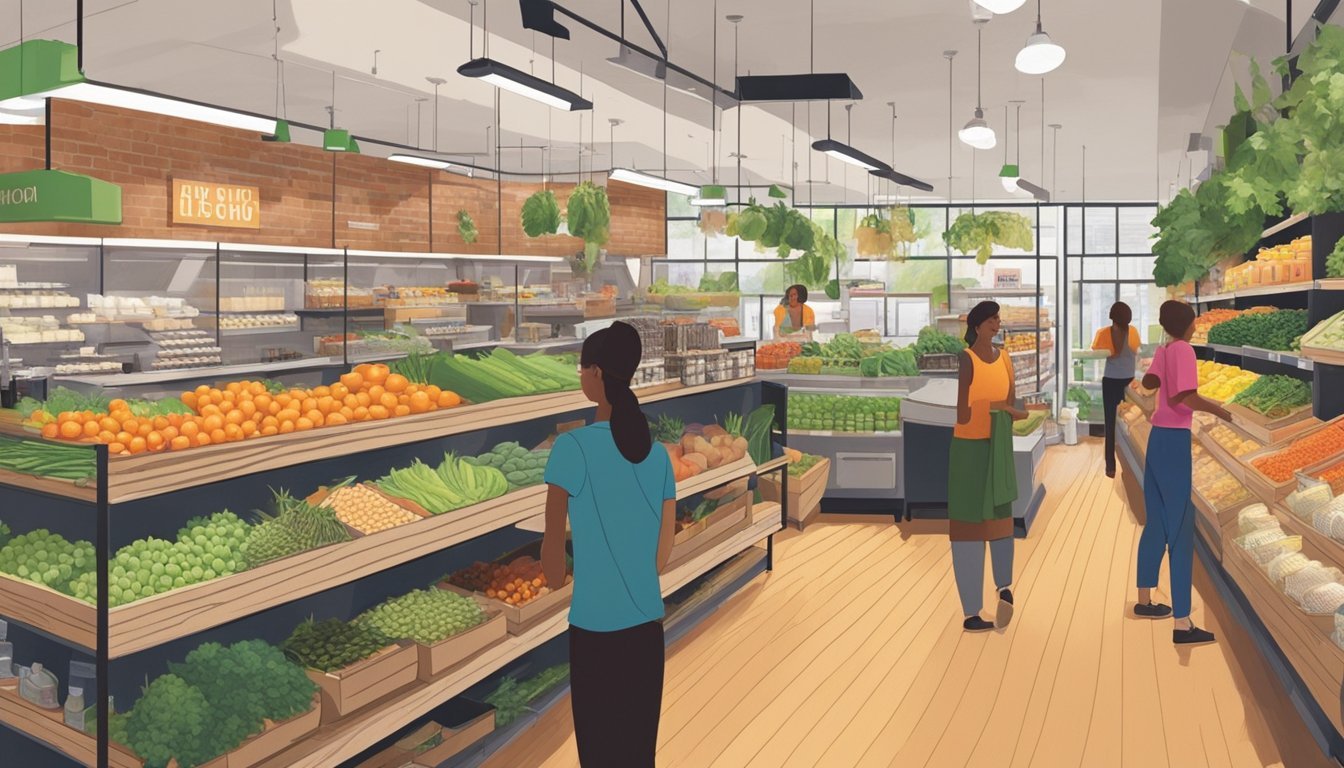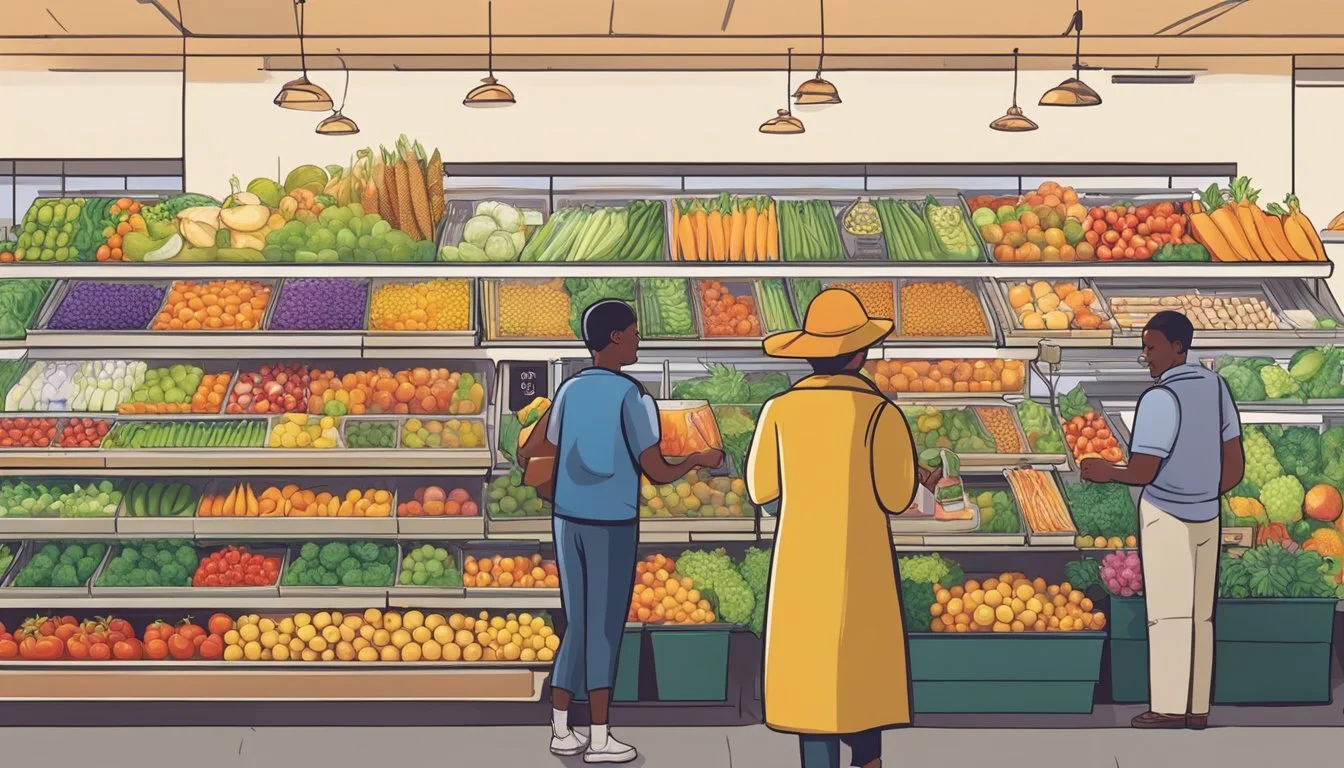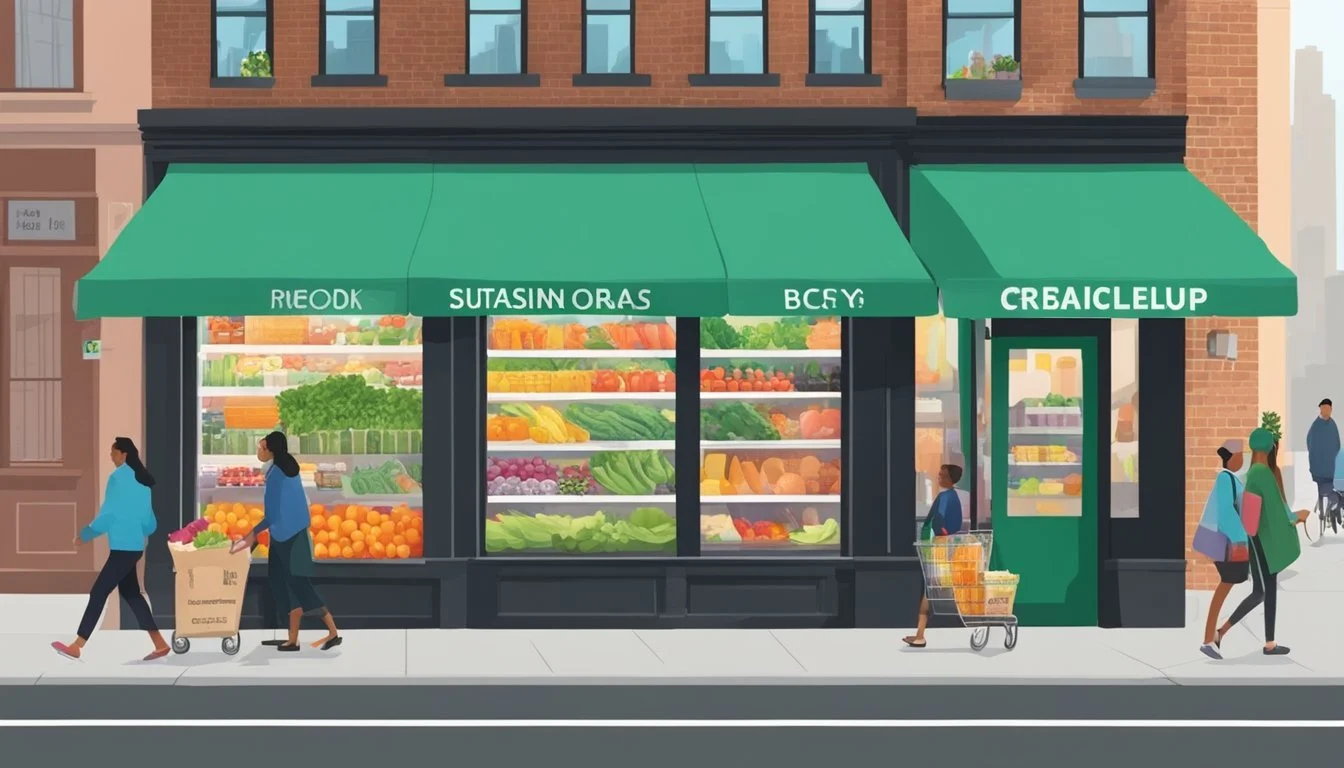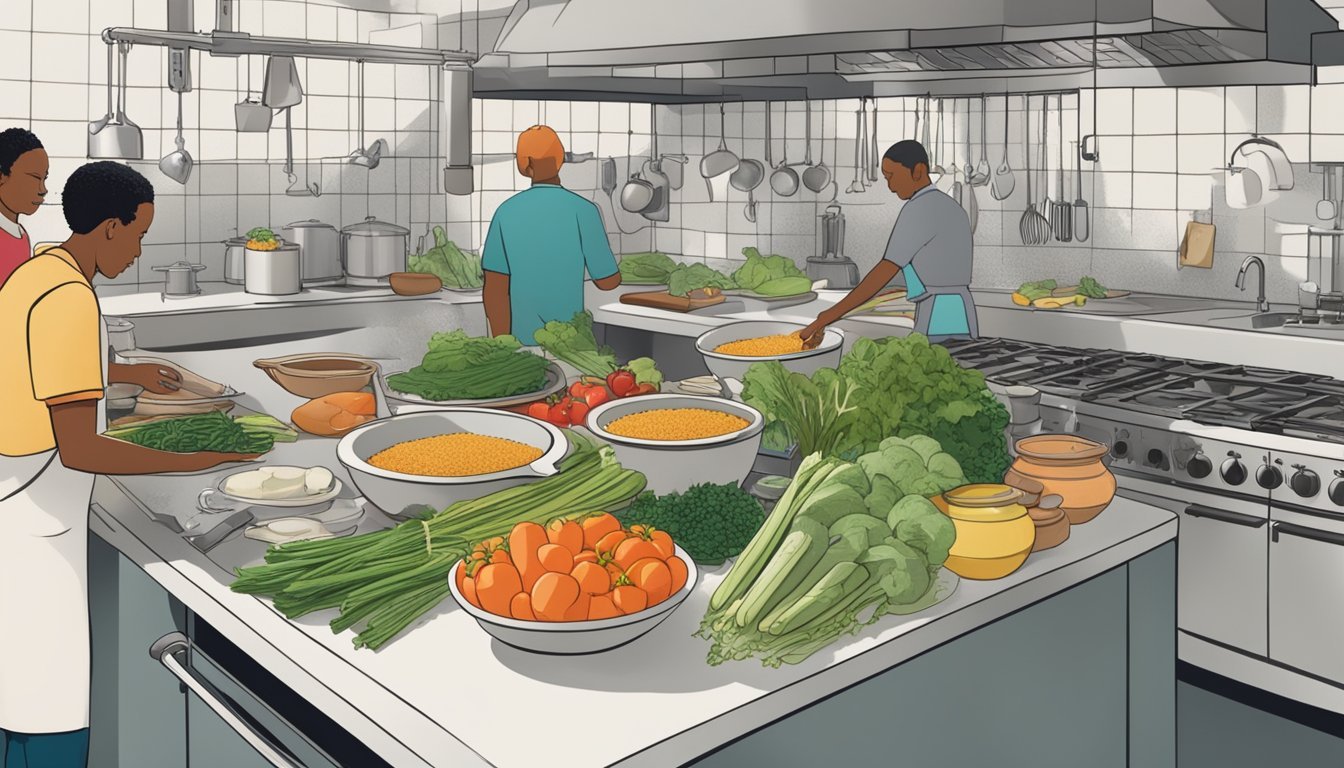Guide to Food Co-Ops in New York City, NY
Your Ultimate Resource
New York City is a bustling metropolis known for its wide array of culinary experiences, and food co-ops are a vital component of this landscape. These cooperatives aren't just about providing access to high-quality, often organic goods—they're about fostering a sense of community and shared ownership amongst their members. In a city where individualism often reigns, joining a food co-op can be a doorway to connecting with neighbors, supporting local producers, and participating in a collective effort to promote sustainable food practices.
Food co-ops in New York City come in different shapes and sizes, ranging from small volunteer-run stores to larger establishments with a wide variety of products. What they all have in common is their cooperative structure, which means they are owned and operated by their members. The members, in turn, contribute to the co-op's governance and day-to-day operations, often in exchange for discounts or other benefits. This model not only encourages local procurement and healthier eating habits but also helps keep money within the community, strengthening the local economy.
While most NYC food co-ops are concentrated in Manhattan and Brooklyn, efforts are perpetually underway to bring the concept to other boroughs. This expansion seeks to address the growing demand for community-oriented food retail options that cater to diverse needs across the city. The experience of joining and participating in a food co-op is unique, offering a stark contrast to the impersonal nature of large supermarket chains and creating a direct line to where and how food comes to the table.
Understanding Food Co-Ops
In New York City, food co-ops have emerged as integral players in the local food economy, with a model that prioritizes people over profit and a system where members collectively own and operate the enterprise.
What is a Food Co-Op?
A food cooperative (food co-op) functions as a grocery store owned and democratically controlled by its members. Unlike traditional supermarkets, these co-ops are grounded in community and the mutual benefit of their consumer-members, who often have a say in the decision-making processes. Members buy shares and contribute to the co-op's operation, allowing them to receive benefits like reduced prices and a voice in the organization's governance.
The History of Food Co-Ops in New York City
Food co-ops in New York City have a rich history of fostering community spirit and ensuring access to healthy food. Beginning as grassroots initiatives, they have grown to become vital community hubs where members support not only local agriculture but also sustainable food practices. Through economic ups and downs, these institutions have remained resilient, reflecting the city's diversity and enduring commitment to collective well-being.
How Food Co-Ops Benefit the Community
By focusing on local and organic produce, food co-ops support local farmers and economies. They often lead initiatives that benefit the community, such as food education programs and environmental sustainability efforts. The cooperative model ensures profits are reinvested into the local area, strengthening the economic and social fabric of the neighborhood.
Economic: Co-ops contribute to local economies by selling locally sourced products.
Social: They often become gathering spaces for like-minded individuals.
Health: Access to organic and fresh food supports community health.
The Role of Members in a Co-Op
In a co-op, members are central to operations. They contribute through a membership fee, participation in governance through votes, and may also volunteer in various capacities. This active involvement ensures that the co-op stays aligned with the needs of its consumer base, while also creating a sense of ownership and community among the members.
Ownership: Members own a part of the co-op and have a say in its direction.
Participation: They participate in decision-making processes, often through democratic voting.
Volunteering: Members support the co-op's daily operations, which can help reduce labor costs and prices.
Joining a Food Co-Op
When joining a food co-op in New York City, individuals should understand the membership requirements, participate in an orientation, and be aware of the volunteering commitments and fees associated.
Membership Requirements
Membership to a food co-op typically requires an individual to be a local resident or to have a local affiliation. Proof of residency or a connection to the community may be requested. Each co-op has its own set of guidelines, but they generally prioritize local community members.
Orientation and Volunteering
New members are usually expected to attend an orientation session to learn about the co-op's values, operational procedures, and their expected roles. Volunteering is a cornerstone of most co-ops, with members required to contribute a certain number of hours per month to assist with various tasks, ranging from cashiering to stocking shelves.
Membership Fees
Joining a co-op involves paying a membership fee, which is often a one-time payment that can vary widely between co-ops. Some co-ops also charge an annual fee. The structure of these fees is designed to be affordable and is utilized to support the cooperative's operations and growth.
One-time fee: Ranges from $25 - $200
Annual fee: Varies (if applicable)
Fees are subject to change and may differ based on the specific co-op's policies.
Exploring NYC Food Co-Ops
New York City's landscape of cooperatively owned grocery stores offers residents a unique way to access fresh, locally sourced, and often organic produce. These community-centric spaces not only provide food but also embody a commitment to sustainable business practices and member empowerment.
Brooklyn Food Co-Ops
Park Slope Food Coop - Positioned in the heart of Brooklyn, this longstanding co-op has been an icon of community-operated food retail since 1973. It is well known for its vast selection of organic and locally produced food. To shop there, one must be a member, which involves an equity investment and a work requirement contributing to the co-op's operations.
Flatbush Food Coop - Serving its community since 1976, the Flatbush Food Coop is a member-owned cooperative, open to all shoppers. They specialize in natural and organic foods and are dedicated to promoting health and sustainability in the community.
Queens Food Co-Ops
The borough of Queens has fewer food co-ops compared to its neighbors, but the options available are engaged actively with their communities, providing access to wholesome food options in a cooperative framework. Residents may find a diverse selection catering to the various cultures that make up the borough's vibrant neighborhoods.
Manhattan Food Co-Ops
4th Street Food Co-op - As Manhattan's only food co-op, the 4th Street Food Co-op offers a variety of organic, fair-trade, and bulk foods and is open to both members and non-members. Members can take advantage of discounts and are encouraged to participate in the cooperative's work shifts.
Bronx Food Co-Ops
In the Bronx, food co-ops are an emerging trend, aiming to serve communities by providing access to healthy food options. These co-ops are community-led initiatives that focus on affordability and nutrition, contributing to the borough's food security and resilience.
Staten Island Food Co-Ops
Staten Island's food co-op initiatives reflect the growing interest in sustainable living and community engagement across New York City's boroughs. Although options are currently limited, the interest in developing food co-ops is a sign of the borough's commitment to health and community development.
Shopping at Food Co-Ops
When shopping at food co-ops in New York City, customers have access to a high-quality selection of food, support local agriculture, and can purchase seasonal items reflective of the region's variety. These community-centric stores offer food that's not only nutritious but also contributes to a sustainable food system.
Organic and Local Food Selection
Food co-ops are renowned for their extensive range of organic and local food products. Shoppers can often find a variety of fruits, vegetables, grains, and more, all sourced from farms within the Hudson Valley and throughout New York State. The organically grown items ensure consumers are buying food that's both healthy for them and better for the environment.
Fruits: Apples, pears, berries from local orchards.
Vegetables: Leafy greens, root vegetables, heirloom varieties from nearby farms.
Grains: Locally-sourced quinoa, rice, and barley, often organic.
Supporting Local Farmers and Producers
By shopping at food co-ops, one directly supports local farmers and producers, bolstering the regional economy. These partnerships allow co-ops to offer a wide selection of items like honey, meat, eggs, and cheese—high-quality products that are sustainably harvested and crafted with care.
Meat: Grass-fed beef, free-range poultry.
Honey: Variety of raw and unfiltered options.
Eggs and Cheese: Cage-free eggs, artisanal cheeses ranging from sharp cheddars to soft bries.
Seasonal Food Choices
Food co-ops excel in providing seasonal food choices that highlight the best of what the season has to offer. This not only means fresher, tastier produce but also supports sustainable practices by reducing the need for long-distance transportation.
Spring: Tender greens, asparagus, strawberries.
Summer: Tomatoes, corn, peaches, zucchini.
Fall: Pumpkins, apples, root vegetables.
Winter: Squashes, cabbages, hydroponically-grown greens.
Customers can also find seasonal items beyond produce, such as fresh-cut flowers in the spring or foraged mushrooms in the fall, enhancing the co-op shopping experience with unique and local offerings.
Community-Supported Agriculture (CSA)
Community-Supported Agriculture, or CSA, is a pivotal initiative within New York City enabling direct access to high-quality, locally grown produce. This model fosters a partnership between local farmers and city dwellers.
Understanding CSA Programs
Community-supported agriculture programs are based on a simple yet profound principle: consumers purchase "shares" from a local farm, essentially buying into the harvest for a season. This mutually beneficial arrangement helps sustain the agriculture and ensures a supply of fresh, often organic, seasonal produce for the participants. For example, Briarwood CSA in New York City offers shares that distribute fresh vegetables, fruits, and even items like bread throughout the growing season. Typically, a share includes a box or bag of various farm products delivered weekly or bi-weekly.
When a consumer becomes a CSA member, they're required to pay upfront for their share at the beginning of the growing season. This model allows farmers to plan accordingly and covers the initial annual costs of the farm operations. In exchange, members receive a regular supply of fresh produce throughout the season. The exact contents of CSA shares can vary and might include:
Vegetables: A variety of seasonal vegetables.
Fruits: Locally grown, often organic fruits.
Eggs: If the farm keeps poultry.
Bread: Some CSAs partner with local bakeries to offer freshly baked bread.
Participating in CSAs
To participate in a CSA, interested consumers should sign up, usually in early spring, since many programs have limited shares and can sell out quickly. Volunteer shifts may be part of the CSA membership requirements, committing members to a few hours each season to assist with distribution or farm work, fostering a deeper community connection and understanding of the food production process.
Here is an illustrative breakdown of a typical CSA membership:
Membership Sign-Up: Often commences between March and April for the upcoming season.
Share Cost: Paid upfront to support the farm's operations.
Volunteer Requirement: Varies by CSA, but often includes helping with share distribution.
Duration: Generally runs from June to November.
By supporting CSAs, consumers directly contribute to local farms' sustainability and share in both the bounty and the risks of agricultural production. This model cultivates community ties and enriches the urban relationship with food sources, highlighting the importance of sustainable, seasonal eating.
Activism and Food Security
Food cooperatives (co-ops) in New York City not only provide access to healthy, locally-sourced food but also play a crucial role in food justice and activism. They often serve as hubs for communities to unite, discuss, and take action on issues related to food security, access, and sovereignty.
Food Justice and Access
Just Food is a notable example of an organization committed to the principles of food justice. It partners with local farms and urban food projects to deliver fresh produce to New York City neighborhoods, with an emphasis on equity for immigrants and low-income residents. Their aim is to create a just food system that values everyone's right to affordable and healthy food options.
Volunteer and Support Initiatives
Many NYC food co-ops rely on volunteer efforts, offering individuals a way to support their community. By volunteering, residents contribute to maintaining the co-op, and some initiatives provide incentives like reduced prices on groceries. This model helps co-ops stay community-centered and fosters an environment where neighbors can interact and unionize around common interests. Through these collective actions, co-ops become more than food suppliers—they become integral parts of the neighborhood fabric, promoting food security and justice in tangible ways.
Managing a Food Co-Op
Managing a food co-operative, often just called a food co-op, entails conscientious organization and clear policies to maintain daily operations, handle inventory, and plan finances. Success in these areas ensures the co-op serves its community effectively as a customer-oriented grocery store or supermarket.
Day-to-Day Operations
In the day-to-day management of a food co-op, efficiency is key. An array of tasks need to be accurately coordinated, including scheduling employees, ensuring quality customer service, and maintaining hygiene standards. All employees should be trained in multiple areas to ensure smooth running, from the checkout stand to the stock room. Processing incoming goods and keeping the shopping environment pleasant are imperative daily duties.
Handling Inventory
A well-managed inventory is the backbone of any food co-op, ensuring that a diverse range of products is always available for consumers. Co-op managers must stay on top of inventory levels, frequently reviewing stock, and anticipating the need for reordering. They should implement a first-in, first-out (FIFO) system to keep inventory fresh and reduce waste. Being a consignment or delivery receiving point, food co-ops require precise inventory tracking from arrival to sale.
Financial Planning
Careful financial planning is crucial for a food co-op's sustainability. This planning includes budgeting for operating costs, setting prices to maintain a reasonable margin while remaining competitive, and establishing reserves for emergencies. Co-ops also need comprehensive insurance to protect against liability and property risks. Financial transparency with consumers, who are often also stakeholders, fosters trust and community support.
Cooking and Food Preparation
When it comes to cooking and preparing meals with co-op sourced ingredients in New York City, one is engaging with a community that values organic food and freshness. Shoppers at food co-ops have access to a range of products that are conducive to a healthier and more sustainable cooking experience.
Organic Food: They often emphasize organic options, which can be pivotal for those who prioritize natural ingredients free from synthetic pesticides and fertilizers in their cooking. Organic products are not just limited to vegetables and fruits but also include dairy, grains, and meat.
Seasonal Freshness: Food co-ops in New York City prioritize seasonal produce, allowing for the freshest ingredients that support local agriculture. They adapt their offerings based on what is currently in season, which can inspire and challenge the home cook to try new recipes or reinvent classic dishes.
Educational Resources: Many food co-ops offer newsletters and cooking tips to help members make the most of their purchases. They may include:
Monthly Newsletters: Provide recipe ideas, food storage tips, and seasonal produce guides.
Cooking Tips: Offer advice on how to cook and prepare organic products to preserve their nutritional value and flavor.
Local Community Ties: By shopping and participating in a local food co-op, cooks are not only getting access to high-quality ingredients but are also contributing to a stronger local economy and a more connected community.
Food co-ops are more than just a place to buy groceries; they are a hub for those who care about the quality and source of their cooking ingredients, as well as the impact on their local and global environment.
Challenges and Considerations
Food co-ops in New York City navigate a unique landscape of challenges and considerations. They must balance community needs with regulatory demands and competition while operating within the still present impacts of the COVID-19 pandemic.
Competition with Supermarkets
Food co-operatives often face intense competition from supermarkets and grocery stores. Supermarkets typically have larger buying power which allows them to offer a wider variety of goods at lower prices. Co-ops, on the other hand, appeal to consumers looking for fresh, organic food and a sense of community involvement, which can sometimes come at a higher cost.
Health and Safety Regulations
Co-ops must adhere to strict health and safety regulations to ensure the welfare of their members and the public. This often means investing in proper storage facilities for fresh and organic foods, training staff on safety practices, and continuous monitoring to maintain compliance, all of which can be resource-intensive.
Impact of COVID-19
The pandemic has presented significant challenges for food co-ops, from supply chain disruptions to changes in consumer behavior. They've had to adapt quickly to maintain service continuity and safety. However, the emphasis on community support and local sourcing that many co-ops embody has helped in fostering resilience against the COVID-19 impacts that affected larger, less nimble retailers.
Looking to the Future
Food co-ops in New York City are steadily adapting and evolving with a strong emphasis on sustainability, technological advancements, and community enrichment. These changes aim to foster a more resilient and connected urban food system.
Sustainability Initiatives
New York City food co-ops are intensifying their sustainability initiatives to create a substantial impact on local ecosystems and economies. They focus on locally-sourced products and environment-friendly practices to minimize carbon footprints. Activities include comprehensive recycling programs and partnerships with local farmers practicing regenerative agriculture. These efforts not only ensure that food is sustainable but also support the community by providing access to fresh, nutritious produce.
Technology in Food Co-Ops
To stay relevant and efficient, food co-ops are leveraging technology to enhance shopping experiences and operational management. They are incorporating inventory tracking systems, digital membership services, and online shopping platforms. Food co-ops are also using social media to conduct outreach, enabling a search for local, sustainable products to be more accessible for a tech-savvy generation.
Expanding Community Outreach
Improving and expanding community outreach remains a priority for NYC food co-ops. They aim to support various community members, including children, seniors, and immigrants, by providing essential resources and fostering a welcoming environment. Educational activities and workshops are offered to engage them in sustainable practices actively. Furthermore, food co-ops are focusing on expanding their reach in previously marginalized areas, thus ensuring that the benefits of cooperative living are shared widely.
Conclusion
Food co-ops in New York City offer a unique and beneficial approach to grocery shopping. They encourage local sourcing, community engagement, and often provide significant savings for their members. With various membership levels, including options for both working and non-working participants, food co-ops are designed to accommodate diverse community needs. They contribute positively to the local economy and foster a sense of shared ownership among their patrons.
The commitment to community welfare and sustainability is a cornerstone principle among NYC food co-ops. They are more than just shopping destinations; they are places where New Yorkers can invest in their neighborhoods and impact their local food systems.
While each co-op has its own set of policies and membership requirements, one common thread is their openness to residents of New York City. Co-ops like the Flatbush Food Coop in Brooklyn and GreenStar Co-op Markets in Ithaca stand as examples of successful models that prioritize fresh, healthy, and affordable food access.
In light of these aspects, New Yorkers interested in food co-ops enjoy a range of options that align with various preferences and lifestyles. Whether seeking to reduce their carbon footprint, find affordable healthful food, or partake in a more community-oriented shopping experience, NYC's food co-ops offer a viable and rewarding alternative to conventional grocery stores.







